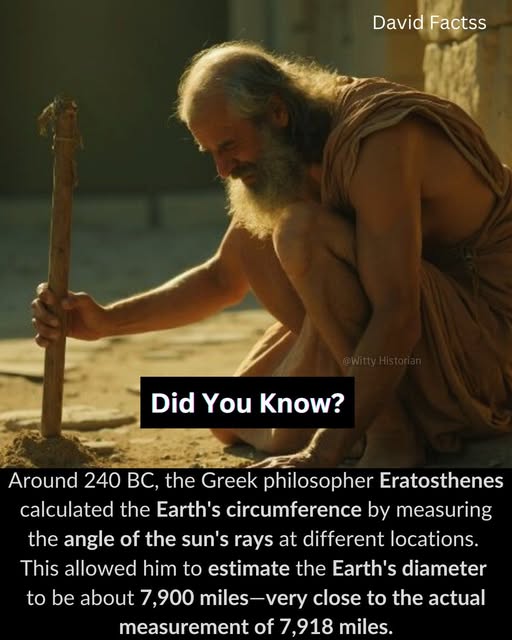
Around 240 BC, the Greek philosopher and mathematician Eratosthenes made a groundbreaking discovery that continues to amaze us today. As the chief librarian at the renowned Library of Alexandria, he used his knowledge of the sun’s movement to calculate the size of the Earth—an incredible feat for his time.
On the summer solstice, Eratosthenes noticed something curious: in Syene (modern-day Aswan, Egypt), the sun was directly overhead and cast no shadow, while in Alexandria, a vertical object did produce a shadow. Realizing this difference was due to the Earth’s curvature, he measured the angle of the shadow in Alexandria and compared it to the distance between the two cities.
With simple tools and sharp reasoning, Eratosthenes estimated the Earth’s circumference to be about 39,375 kilometers (roughly 24,662 miles).
Remarkably, this was strikingly close to the modern measurement of approximately 40,075 kilometers (24,901 miles). Considering the limited technology of his era, his calculation was an extraordinary scientific achievement.
Eratosthenes’ innovative thinking not only showcased his brilliance but also paved the way for future exploration and scientific discovery. His work remains a testament to human curiosity and the power of observation—proving that even with simple tools, great minds can unlock the secrets of our world.
